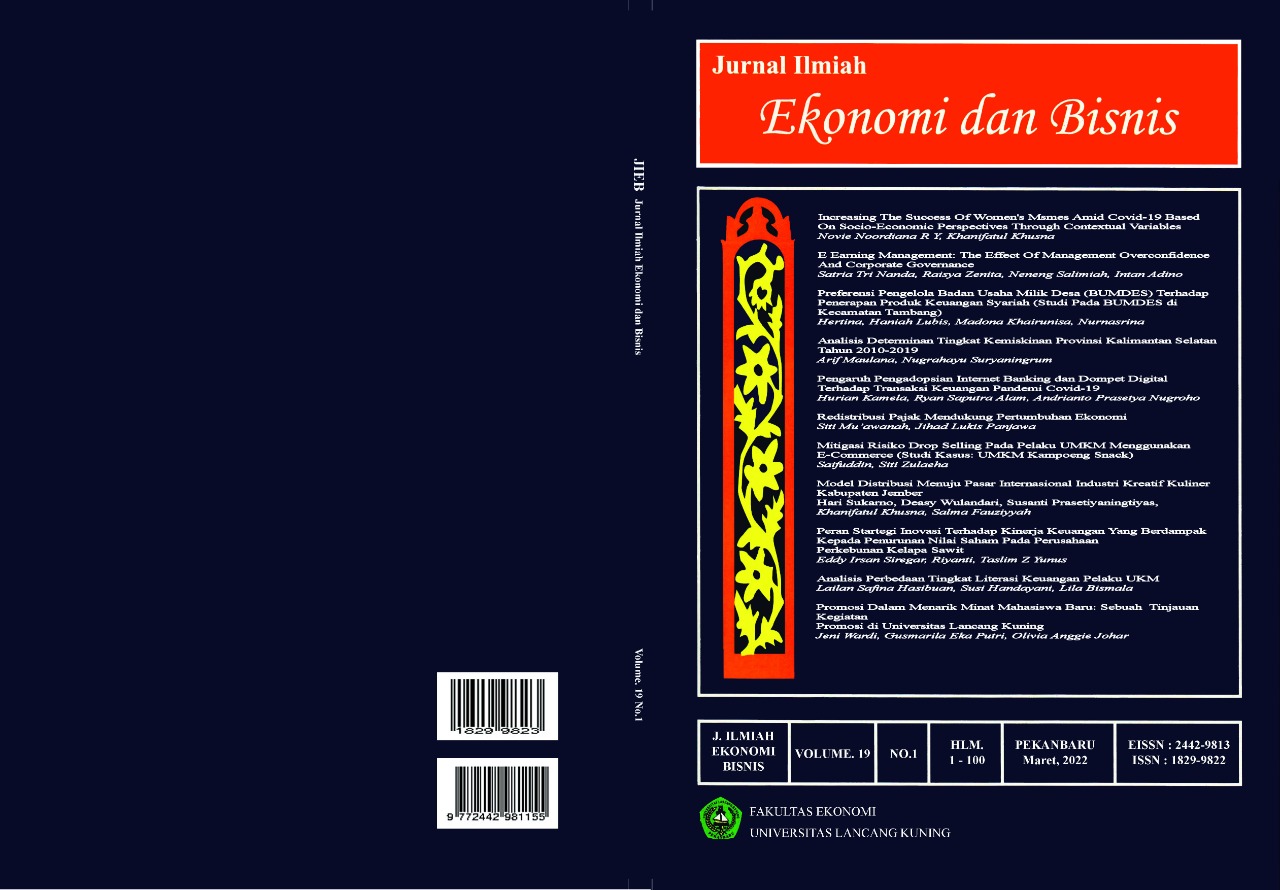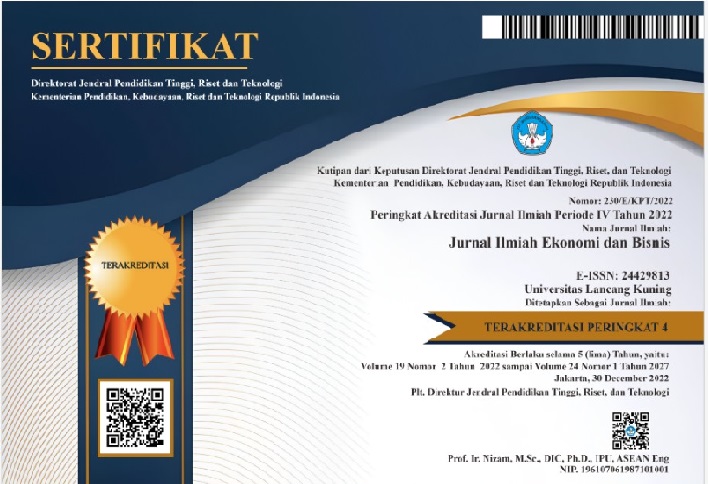PENGARUH PENGADOPSIAN INTERNET BANKING DAN DOMPET DIGITAL TERHADAP TRANSAKSI KEUANGAN PANDEMI COVID-19
Abstract
The COVID-19 pandemic has directly changed people's habits to switch to online systems, including financial transactions. The most common are the use of internet banking and payments using digital wallets. The purpose of this study is to quantitatively analyze the use of internet banking and digital wallets in financial transactions based on Theory Of Planned Behavior (TPB). The method used is primary data (quantitative) by questionnaire as many as 62 people who use internet banking. This research was taken for 1 month, namely February 2021 (during COVID-19). The dependent variable used is Financial Transaction, while the other independent variables use 3 variables, namely Attitude, Norm and Behavior Control. The results of this study provide information that only attitude and norm have an effect on the financial effect. This provides evidence that the use of financial transactions via the internet is often done during the COVID-19 pandemic. This provides a new paradigm that financial transactions have begun to switch to using non-cash payments.
Downloads
References
Andreou, P. C., & Philip, D. (2018). Financial knowledge among university students and implications for personal debt and fraudulent investments. Cyprus Economic Policy Review, 12, 3e23.
Andreou, P. C. (2020). Financial literacy and its influence on internet banking behavior. https://doi.org/10.1016/j.emj.2020.12.001
Arif, I., Aslam, W., & Hwang, Y. (2020). Technology in Society Barriers in adoption of internet banking : A structural equation modeling - Neural network approach. Technology in Society, 61 (November2019),101231. https://doi.org/10.1016/j.techsoc.2020.101231
Lusardi, A., & Mitchell, O. S. (2011). Financial literacy around the world: An overview. Journal of Pension Economics and Finance, 10(4), 497e508
M. Xue, L.M. Hitt, P.-y. Chen. (2011). Determinants and outcomes of internet banking adoption, Management Science 57(2).291-307 https://doi.org/10.1287/mnsc.1100.1187
Rahi, S., Abd, M., & Hafaz, A. (2019). Technology in Society Integration of unified theory of acceptance and use of technology in internet banking adoption setting : Evidence from Pakistan. Technology in Society, 58(March), 101120. https://doi.org/10.1016/j.techsoc.2019.03.003
Sharma, R., Singh, G., & Sharma, S. (2020). International Journal of Information Management Modelling internet banking adoption in Fiji : A developing country perspective. International Journal of Information Management, 53(June 2019), 102116. https://doi.org/10.1016/j.ijinfomgt.2020.102116
State Bank of Pakistan. (2013). 94.4% bank’s branches offer Real-Time Online Banking services in Pakistan: SBP [Online]. Available: http://www.sbp.org.pk/press/2013/PSR-30-May-2013.pdf, 2013, May.
Copyright (c) 2022 Hurian Kamela, Ryan Saputra Alam, Andrianto Prasetya Nugroho

This work is licensed under a Creative Commons Attribution-ShareAlike 4.0 International License.










 This work is licensed under a Attribution 4.0 International (CC BY 4.0)
This work is licensed under a Attribution 4.0 International (CC BY 4.0) 